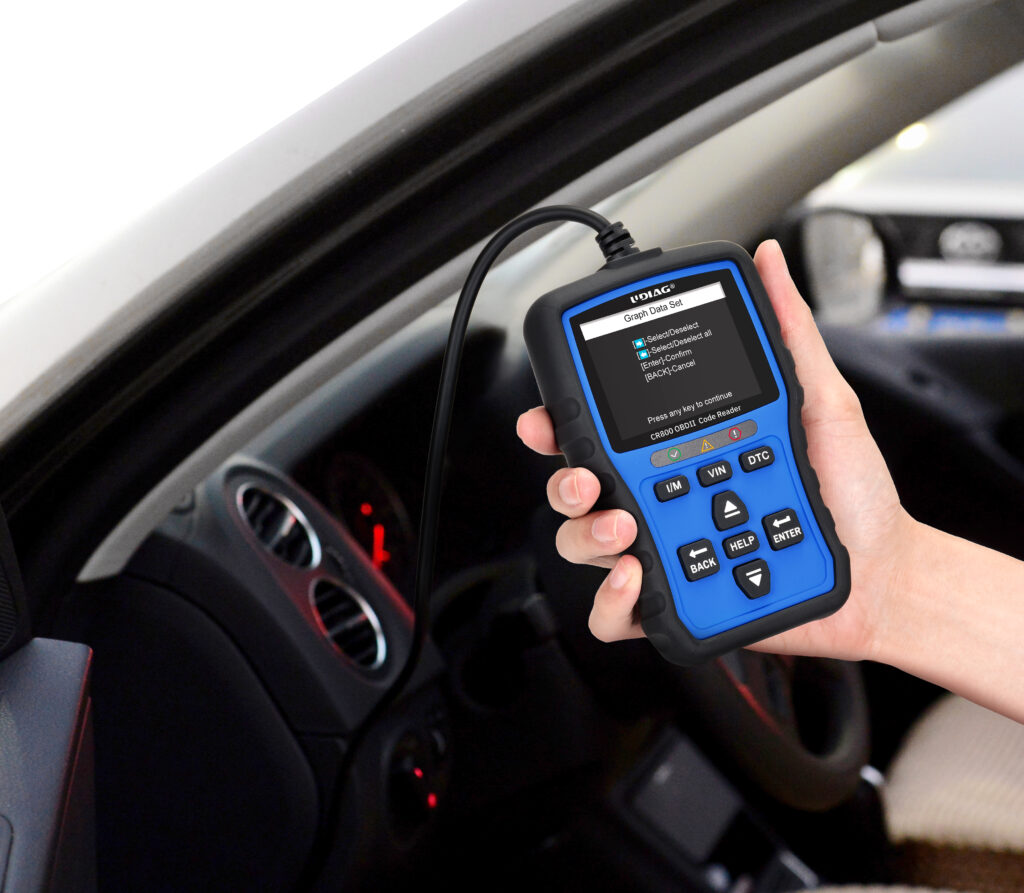Harnessing the Power of Diagnostic Trouble Codes for Vehicle Maintenance.
2023-11-01 by UDIAG
In the modern era of automotive technology, the integration of diagnostic trouble codes (DTCs) has revolutionized the way we approach vehicle maintenance. These alphanumeric codes, generated and stored within a vehicle’s computer system, are pivotal in identifying and resolving issues that may arise. This essay explores the significance of DTCs in vehicle maintenance, their interpretation, utilization, and future implications.

I. Understanding Diagnostic Trouble Codes
DTCs are the cornerstone of On-Board Diagnostics (OBD) systems, encompassing both generic and manufacturer-specific codes. These codes are integral in flagging potential issues within a vehicle’s systems, from engine problems to transmission issues. Each code corresponds to a particular problem, providing a standardized language for both mechanics and vehicle owners.

II. Benefits of DTCs in Vehicle Maintenance
The advantages of DTCs in vehicle maintenance are multifaceted. Early detection of problems allows for proactive solutions, preventing minor issues from escalating into major, costly repairs. Moreover, these codes streamline the troubleshooting process, reducing the time and resources needed for identifying and rectifying issues. DTCs also facilitate predictive maintenance, enabling preemptive measures to maintain a vehicle’s optimal performance and safety.
III. Tools and Equipment for Reading DTCs
OBD-II scanners are the most common tools used to retrieve DTCs. These scanners come in various types and are user-friendly, making them accessible to both professional mechanics and vehicle owners. Smartphone apps and specialized diagnostic tools are also available, allowing users to read and interpret DTCs with ease.
IV. Steps in Utilizing DTCs for Vehicle Maintenance
The process of harnessing the power of DTCs involves connecting an OBD scanner to the vehicle’s port, reading and interpreting the codes, and understanding the underlying issue. This comprehension guides the determination of necessary repairs or maintenance, whether for a misfiring engine, transmission malfunction, or other system-related problems.
V. Common DTCs and their Interpretation
Examples of typical DTCs, such as the P0300 code indicating engine misfires, elucidate the scope of issues that DTCs can uncover. Understanding these codes and their implications aids in resolving problems efficiently. Case studies exemplifying DTC identification and subsequent resolution highlight their practical application in maintenance.
VI. Strategies for Addressing DTCs
Addressing DTCs involves various strategies, from do-it-yourself troubleshooting to consulting professional mechanics. Regular maintenance schedules based on DTC analysis help ensure a vehicle’s health and performance.
VII. Challenges and Limitations of DTCs
Despite their significance, DTCs may sometimes be incomplete or misleading. Accurate interpretation is essential, and older vehicles may have limitations in their OBD systems, affecting the comprehensiveness of the codes.
VIII. Future Trends and Innovations in DTCs
Future trends in diagnostic technologies may integrate AI and machine learning for more sophisticated DTC analysis. These innovations hold promise for more accurate and comprehensive issue identification, further enhancing vehicle maintenance.
Conclusion
In conclusion, Diagnostic Trouble Codes stand as a pivotal tool in contemporary vehicle maintenance. Their role in identifying, interpreting, and resolving issues is indispensable, offering both efficiency and cost-effectiveness. As technology progresses, the utilization of DTCs is expected to evolve, promising a future where vehicle maintenance is more streamlined and effective than ever before.
FAQs
1. What are Diagnostic Trouble Codes (DTCs)?
Diagnostic Trouble Codes are alphanumeric codes generated by a vehicle’s onboard computer systems to indicate specific issues within the vehicle.
2. How do I retrieve DTCs from my vehicle?
You can retrieve DTCs using an OBD-II scanner or diagnostic tools by connecting them to the OBD port in your vehicle, usually located under the dashboard.
3. What kind of problems do DTCs help identify?
DTCs can identify various issues such as engine misfires, transmission problems, emission system faults, sensor malfunctions, and more within a vehicle.
4. Can I use a smartphone app to read DTCs?
Yes, there are several smartphone apps available that can connect to an OBD-II adapter and read DTCs, providing users with diagnostic information.
5. How important are DTCs in vehicle maintenance?
DTCs are crucial as they allow early detection of issues, potentially saving time and money by addressing problems before they worsen or cause more damage.


